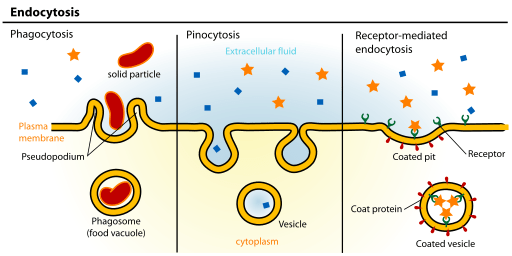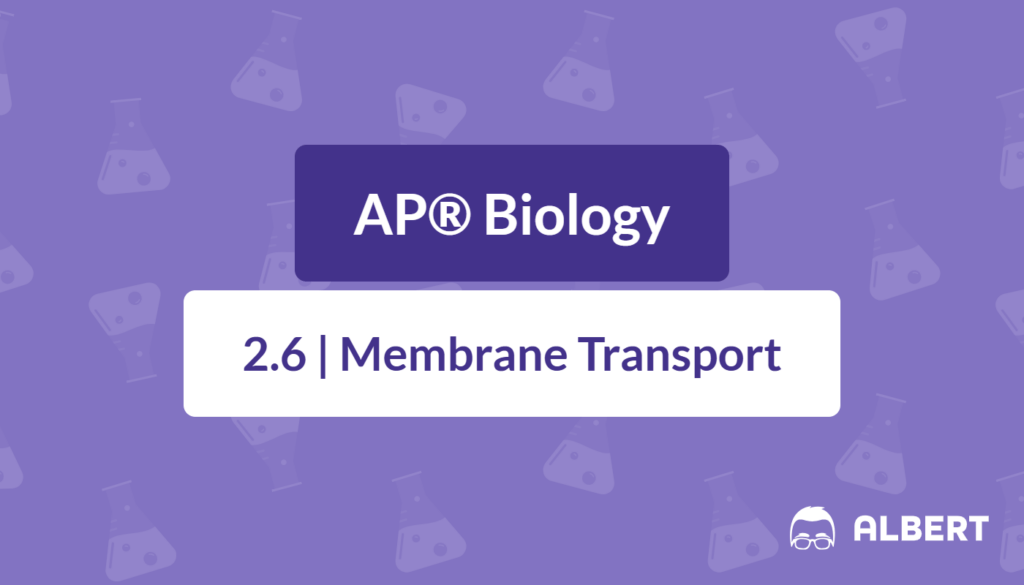What We Review
Introduction
Cellular transport is essential for life. It ensures cells receive nutrients, eliminate waste, and maintain a balanced internal environment. While passive transport (like diffusion and osmosis) moves molecules down their concentration gradients without energy, active transport processes often require energy in the form of ATP. This post focuses on two important active processes—endocytosis and exocytosis—to help you deepen your understanding and confidently tackle AP® Biology exam questions.
Understanding Cellular Transport
A. Overview of Transport Mechanisms
- Passive Transport
- Definition: Movement of molecules from areas of high concentration to low concentration without using cellular energy (ATP).
- Significance: Helps cells maintain equilibrium (e.g., the simple diffusion of oxygen into cells or osmosis regulating water balance).
- Active Transport
- Definition: Movement of molecules against their concentration gradient, requiring energy (e.g., the sodium-potassium pump).
- Necessity for Energy: ATP supplies the energy for these transport proteins or processes, enabling cells to maintain internal conditions different from their surroundings.
Endocytosis
A. Definition and Purpose
Endocytosis is an active transport process in which the cell membrane engulfs external substances, forming vesicles or vacuoles that bring materials into the cell. It is crucial for the uptake of large particles, fluids, and specific molecules—nutrients, hormones, and even viruses can enter cells via this process.
B. Types of Endocytosis
- Phagocytosis: “Cell Eating”
- Large particles (like bacteria or debris) are engulfed and enclosed in vesicles known as phagosomes.
- Common in immune cells, such as macrophages, that protect the body by ingesting pathogens.
- Pinocytosis: “Cell Drinking”
- The cell membrane invaginates to form small vesicles filled with extracellular fluid, allowing cells to sample and absorb dissolved substances.
- Receptor-Mediated Endocytosis
- Highly specific molecules (ligands) bind to membrane receptors. Once bound, the membrane invaginates, forming a coated vesicle containing the target molecule.
- Essential for the selective uptake of substances like certain hormones or LDL cholesterol.

C. Mechanism of Endocytosis
The cell membrane folds inward around the target substance. A vesicle pinches off into the cytoplasm, carrying the substance into the cell. ATP is used during vesicle formation or in reorganizing the cytoskeleton.
D. Is Endocytosis Active or Passive?
Endocytosis is an active process. It requires ATP to deform the cell membrane and move materials against natural forces.
Exocytosis
A. Definition and Purpose
Exocytosis is the reverse of endocytosis: it’s an active transport process that exports substances from inside the cell to the outside environment. Cells rely on exocytosis to secrete materials like hormones, enzymes, and neurotransmitters—critical for processes such as muscle contraction, digestion, and cell signaling.
B. Mechanism of Exocytosis
- Vesicles formed inside the cell (commonly in the Golgi apparatus) travel to the cell membrane.
- The vesicle membrane fuses with the plasma membrane, releasing the vesicle’s contents to the outside environment.
- This process is vital for the regulated secretion of cellular products.
C. Does Exocytosis Require Energy?
Yes. In exocytosis (just like in endocytosis), cellular energy (ATP) powers vesicle movement and membrane fusion. Hence, exocytosis is considered an active transport mechanism.
Comparison of Endocytosis and Exocytosis
A. Similarities in Mechanism
- Both involve the formation or fusion of vesicles with the plasma membrane.
- Both require energy (ATP) to move materials across the membrane, classifying them as active transport processes.
B. Differences in Function
- Endocytosis: Brings substances into the cell (ingestion of nutrients, fluids, or pathogens).
- Exocytosis: Releases substances outside the cell (secretion of hormones, enzymes, or waste products).
C. Importance in Cellular Homeostasis
- Endocytosis helps ensure that cells acquire essential nutrients and recycle membrane components.
- Exocytosis eliminates waste, delivers signaling molecules, and maintains membrane composition.
- Together, these processes maintain the balance of materials, solutes, and water—ensuring the cell’s internal environment stays regulated.
Practical Applications and Examples
A. Real-World Examples of Endocytosis and Exocytosis
- Immune Response (Phagocytosis): White blood cells use phagocytosis to engulf and destroy bacteria, playing a crucial role in our immune defense.
- Neurotransmitter Release (Exocytosis): Neurons release neurotransmitters into synapses through exocytosis, enabling rapid message transmission throughout the nervous system.
- Hormone Secretion (Exocytosis): Endocrine cells package hormones in vesicles, which fuse with the cell membrane to release them into the bloodstream.
B. Practice Problems for AP® Exam Preparation
- Which of the following processes requires direct usage of ATP?
- Simple diffusion
- Facilitated diffusion
- Osmosis
- Endocytosis
- A cell needs to take in a specific nutrient hormone from its surroundings. Which type of transport best describes this process?
Conclusion
A. Recap of Key Points
- Endocytosis and exocytosis are vital active transport mechanisms that help cells import nutrients and export substances such as hormones or neurotransmitters.
- Both processes rely on ATP and vesicle formation/resorption to move materials across the membrane.
Fully grasping these processes supports a deeper understanding of cellular biology and will be invaluable during the AP® Biology exam and beyond. Take time to review and practice questions on endocytosis and exocytosis. Boost your confidence by relating these concepts to real-life examples—like immune responses and neurotransmitter release—and keep exploring how cells masterfully regulate their internal environment.
By mastering endocytosis and exocytosis, you’ll be well-prepared for questions on active transport in your AP® Biology studies—and gain a stronger appreciation for the incredible ways cells maintain life.
Sharpen Your Skills for AP® Biology
Are you preparing for the AP® Biology test? We’ve got you covered! Try our review articles designed to help you confidently tackle real-world math problems. You’ll find everything you need to succeed, from quick tips to detailed strategies. Start exploring now!
Need help preparing for your AP® Biology exam?
Albert has hundreds of AP® Biology practice questions, free response, and full-length practice tests to try out.








